Culture
Jainism, Buddhism And Bhakti: The Contradictory Narratives Of Social Equality And Exclusion
Aravindan Neelakandan
Feb 28, 2022, 06:42 PM | Updated 06:42 PM IST
Save & read from anywhere!
Bookmark stories for easy access on any device or the Swarajya app.
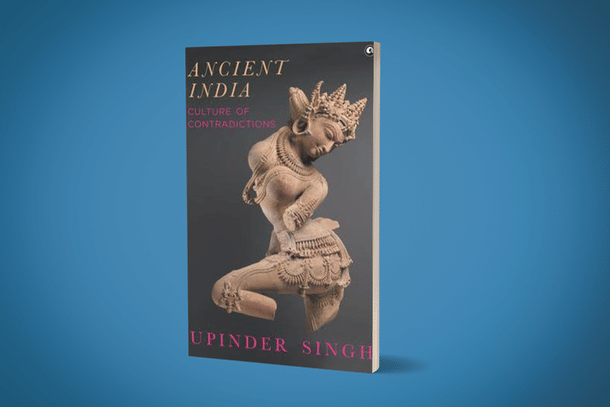
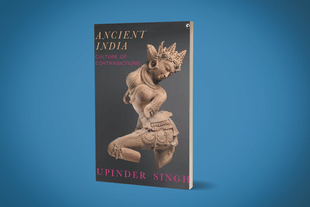
Ancient India: Culture of Contradictions. Upinder Singh. Aleph Book Company. 2021. Pages 280. Rs 593.
The first part of the review of the latest book by Dr Upinder Singh, dealt with how despite the availability and influence of multiple concepts of the origin of varna, the more static-creationist account is favoured over the more evolutionist account though the latter resonates better with the historical and social reality of ancient to modern India.
The second part of the review dealt with the assertion found in the book that in ancient Tamil society as depicted in Sangam literature varna made no impact though the Brahmins were 'mentioned'. The speculation that the ascendancy of Brahmins in the sixth to ninth centuries CE under the Pallavas had correlation with the 'spread of caste and untouchability' in south India which is analysed and shown to be wrong.
Now we come to how the essay deals with Jainism, Buddhism and Bhakti Movement.
The essay denies the possibility of continuity that Jainism and Buddhism might have with Veda-Upanishadic religion. Upanishads may sound critical of Vedic ritualism but still they accepted the rituals and in turn they were incorporated into the Vedic corpus.
This is quite problematic. Even Professor A L Basham, who was steeped in the nineteenth and colonial twentieth century academic prejudice of mapping philosophical systems with racial/ethnic stereotypes (like barbaric Aryan concept of deity, etc) in his study on Ajivikas, particularly in the conceptualisation of niyati, pointed out that not just in Ajivikas, but also "in the other new sects of the period" there was a revival "in one way or another the Vedic concept of rta, but incorporating with it an atheistic or impersonal first principle, posited a framework of karmic cause and effect, within which the soul moved." (History and Doctrines of the Ajivikas, a Vanished Indian Religion, Motilal Banarsidass, 1981, Page 284)
The point is the relation between the Vedic and Jain, Buddhist, Ajivika traditions cannot be simplified as the latter emerging in a total vacuum. None of them did. Nor were they monolithic. They contained diverse elements and their boundaries were semipermeable allowing osmosis of conceptualisations, and similarly they also incorporated different social systems.
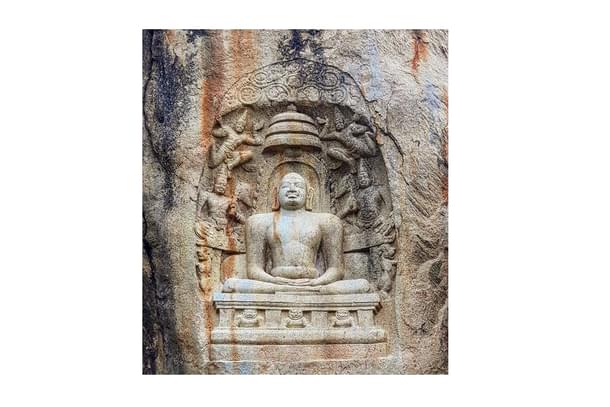
In the case of both Jainism and Buddhism the essay takes a very nuanced path. These religions "promised salvation, not social equality" (Page 45). Yet she gives instances from Buddhist and Jain literature where the birth-based notion of Brahmin-hood are questioned and Brahmins are shown as arrogant and conceited.
(Buddha's) doctrine was certainly more socially inclusive than the Brahmanical varna–jati ideology, but it did not aim at overturning or abolishing social differences.(p.45)
Like Jainism, Buddhism reversed the Brahmanical order of rank and placed the Kshatriya higher than the Brahmana. Like Jainism, it criticized Brahmanas for their lack of true knowledge, their performance of sacrifices, and their opulent lifestyle, but retained the idea of the true Brahmana — not someone born in a Brahmana family, but one who had true knowledge.(p.52)
The above passages show how the narrative is built. The methodology that is used in the article for this narrative is biased against the so-called 'Brahminical' in favour of Jainism and Buddhism.
With respect to Vedic tradition the essay presents only the hierarchical dimensions and social exclusion as its characteristics. Any data from inside the literature showing contradictory stands are either ignored or minimised. But with respect to Buddhism and Jainism with even mild pointing out of social-hierarchical dimensions are countermanded with stronger supposedly egalitarian examples.
For example:
The essay says that Buddha himself did not observe any caste restrictions and that he also dined with "humble folk" as his last meal was said to be in the house of a blacksmith. This is quite a stretch in the sense the blacksmith community was a respected community in the Vedic times and it continued to be so during the Buddhist times also. Blacksmiths were among the Ratnins and were members of Parisada — positions which would have been the highest in the social hierarchy during the Vedic times. It was only during the post-Mauryan period the slow descent of blacksmiths in the social hierarchy started. (A P Pija, Blacksmiths in Ancient and Early Medieval India, Proceedings of the Indian History Congress, Vol. 40 (1979), Pages 159-162)
But there are facts which clearly indicated the behaviour otherwise of the Buddha. While the Buddha "is described as having visited the assemblies of the Brahmana, the Kshatriya and gahapati devotees (upasakas)", the Sudra assemblies are conspicuous by their absence. The Buddha also declares that the Kshatriyas and the Brahmanas should take precedence over the other two Varnas "in the way they are addressed, received, approached and treated". (R S Sharma, Sudras In Ancient India A Social History Of The Order Down To Circa AD 600, Motilal Banarsidass, 1953:1980, Page 153)
Again in the case of the Chandalas, the defiled and socially excluded group, the essay initially takes seemingly objective stand that the approach of Buddhism and Jainism was that the Chandalas were considered a lowly group, but they also questioned this attitude. For Buddhism and Jainism, just as in the case of Brahmana where a person is one through conduct rather than birth, so is the case with Chandala.
The essay narrates the instance of Setaketu Jataka where an arrogant Brahmana Setaketu who asked the Chandala to move away because even the wind from the direction of Chandala would pollute him. The Chandala outsmarts Setaketu who then was pushed into the ground between the feet of the Chandala. Later, Chandala was revealed to be Sariputta a famous Buddhist monk.
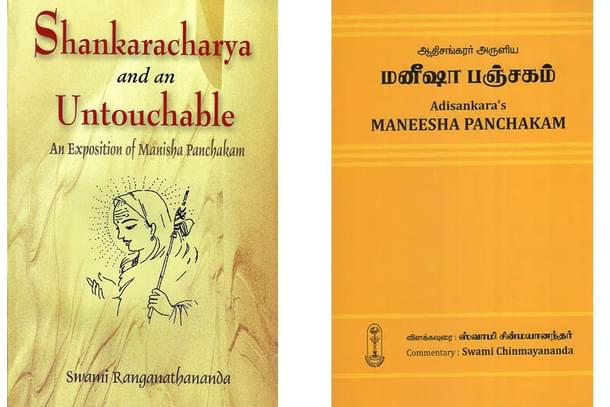
The parallel of Adi Sankara's encounter with a Chandala which in fact is even more detailed and powerful as a statement of spiritual egalitarianism is left unmentioned. In fact, Maneesha Panchakam the verses that emphasise the spiritual and hence essential unity of all humanity which emanate from this episode has been used in the Hindu reformist circles against caste discrimination and untouchability. It is anybody's guess if the above Jataka had been used as a critique of Japan's largely Buddhist society's untouchability towards the Burakumin.
More interesting and relevant is the fact that in many Buddhist depictions Buddha himself is shown as Bodhisattva Svetaketu in highest heavens who decides to come down as Buddha as in the depictions of Nagarjunakonda.
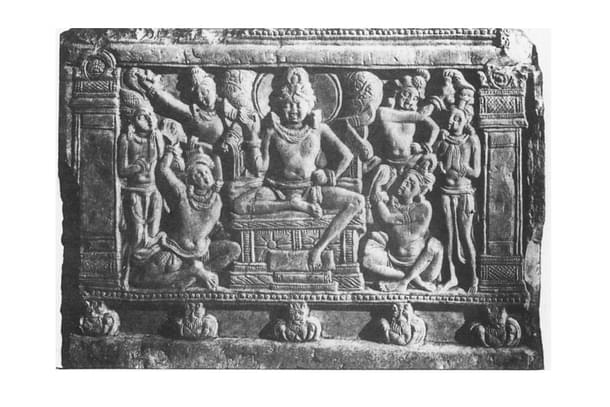
Presenting only this Jataka says only a partial story. In Sigala Jataka, Buddha consoled a barber who was a follower of Buddha. The barber had lost a son who fell in love with a Licchavi princess and died with a broken heart. To console the barber, Buddha said that in the previous birth also his son who was born a jackal had fallen in love with a lioness and had died. The jackal was the barber's son and the lioness was the Licchavi princess. When the jackal approached the lioness, the lioness thinks how a Chandala like jackal could approach a noble animal like herself.
Similarly, when Buddha dissuades the monks from getting food in wrong ways, he states that such ill gotten food is like food from a Chandala. Here, he tells the tale of a Bodhisattava who was a Chandala and a Brahmana who were going together through a long journey. The Chandala had food and the Brahmana did not. When the Chandala offered the Brahmana food, the Brahmana refused. But later overcome with hunger he took the food from the Chandala but overcome with grief he died. Ill-gotten food of the monks is then compared to this food from the Chandala.
So this brings out a very interesting contradiction. Bodhisattva could come in the form of a Chandala but yet that would not change his polluting nature. A food ill-gotten was to Buddha as polluting as the left over food of the Chandala.
One can contrast this with the Mahabharata incident where Rishi Uttanka lost the opportunity to get Amrita because he refused water from the Chandala. Thus it can be argued that the so-called Brahminical or more correctly the Vedic tradition opposes the social exclusion more effectively and in a more principled manner than Buddhism.
The point is in all the three traditions namely the Vedic, Buddhist and Jain there are voices which are at ease and go with social stratification and exclusion — the voices of social conservatism. In all the three traditions there are voices which go against social stratification, birth based discrimination as well as privileges and against social exclusion. Pitting the voices of social exclusion from one tradition against those for social emancipation through spiritual values of the other may serve a specific kind of narrative but not healthy academic exercise.
In the case of bhakti again the same narrative manipulation could be seen. Though it is pointed out that the root of the word bhakti comes from Bhaj, that this root is a Vedic term is not mentioned. Bhakti as devotional love for deity or guru itself goes back according to Dr Singh to circa 200 BCE. The reason for this date is to fit in bhakti as a response to or as a kind of counter-reactionary movement to Jainism and Buddhism and also as a reactionary movement against so-called 'Brahminism'. This is wrong. Even Indological scholars have agreed bhakti as devotion to divine could be seen clearly in Vedas and Upanishads. Dr Raj Singh, a scholar of religious philosophy, brings out how Bhakti was not a new movement has always been:
Bhakti is a remarkable existential tendency that shows itself in the rich expanse of the tradition originating from the Vedas. ... A thoughtful study of the historical expressions of bhakti reveals its existential role. ... If bhakti is an attitude of love, devotion, friendship, and reverence, it is certainly present in these human outpourings (Vedic hymns) of communion with the divine. Homage is paid to, mercy is sought from and power is recognized of the major gods such as Varuna, Agni, Indra and several minor deities. ... The essential tendencies of bhakti such as recognition of a god's charity, friendliness, and deep involvement in human affairs, as well as man's self-surrendering prayer (nivedana), symbolic offerings (archana), and sweet recollections of a god's goodness (smarana) are all evident. ... The stamp of bhakti in the Upanishads is evident in the panorama of their questions concerning the absolute and concerning the actual liberation of man.Bhakti and Philosophy, Lexington Books, 2007, Page 8 & Page 10
In such a vast canvas of manipulative narrative an error like mentioning Appar, a well known Saiva saint as 'Vaishnava saint' (Page 56) can be ignored as probably a slip.
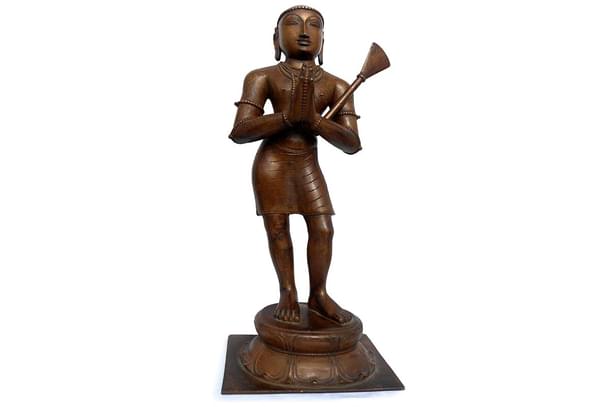
The fact is that bhakti when resurfaced as a movement actually questioned not just the birth based discriminations. But more importantly, it opposed the defilement of certain occupations and degrading of certain communities. Historian Vivekanand Jha had pointed out this aspect:
The distinction between the affluent and the destitute, the high (ukkattha) and the low (hina), is pronounced and explicit, and is applied to jatis (castes), kulas (families), kammas (occupations) and sippas (crafts) in both Buddhism and Jainism. The occupation of the flowersweeper, the crafts of the basket-maker, leather-worker, weaver, potter and barber are designated as low, and the Chandalas, Nesadas, Pukkusas, Venas and Rathakaras are stigmatized as despised castes (hina jatis) in the Pali Canon. The Chandalas, who are also known as Matangas and Panas, and the Sovagas are equally despised in the Jain texts.Caste, Untouchability and Social Justice: Early North Indian Perspective, 19–30. Social Scientist 25 (11/12) Nov–Dec, 1997
In this context one can say that the bhakti movement drawing its strength from Vedic-Upanishadic stream and (in the case of Tamil land) Sangam Tamil imagery spoke against discriminations. In fact Dr Singh quotes a verse of Appar where he states that a person who could be a leper with his body parts decaying and an outcaste who skins the cow and eats, that person would be considered as worthy of worship if that person was a devotee of Shiva.
This can be read not only as a critique of so-called Brahminism but also a challenge to Buddhism and Jainism where the above occupation was deemed foul and defiled. Similarly, Thirumazhisai Azhwar was from the community of basket makers, considered as low occupation in Jainism. Similarly, Atibatha Nayanar was a fisherman whose act of devotion was to leave again into the sea the first fish of his catch. In the traditional rendering of Somasi Mara Nayanar's life Shiva who has given the promise of his presence for a yajna (in the parlance of our historian 'a Brahminical ritual') appears as an untouchable and the Brahmins who left the altar get the curse that during that particular time of the year they would be considered as "untouchables of the noon". Would any historian regard this as the Vedic-Saivaite criticism of untouchability a Jain-Buddhist development which had got entrenched in the society?
The essay makes a grandiose statement that while "by our own standards, early Jainism and Buddhism’s stand on social equality falls short", "by the standards of their own time, it was radical".
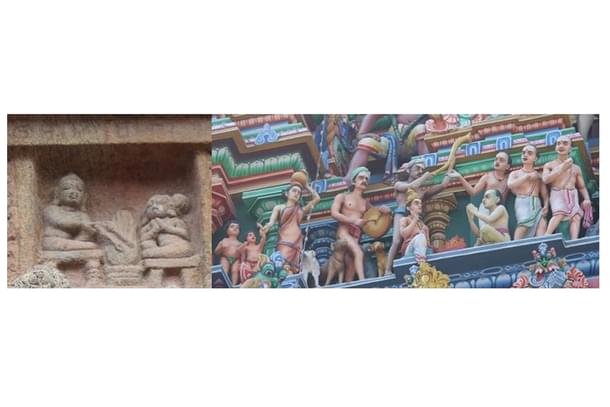
In reality, when one looks at the tower of Mylapore Shiva Temple and see the figures of Shiva and Parvati appearing as untouchable couple before the Brahmins thus proclaiming the spiritual oneness of humanity as also the utter inhumanity of social discrimination, one can say that the radical advocacy of equality that Vedic tradition — from Kavasha, Satyakama ,etc, to bhakti seers — has emphasised is far beyond the standards of that time and perhaps even radical for our own times. (The tower figurines though a later day creation were derived from the traditional account.)
This three part critique is for just three-fourth of one essay in the book. Now think of an entire book with such essays. And think of the kind of distortions, subtle, nuanced yet powerful distortions from establishment historians who have clout and had and still have stranglehold on the writing of Indian history in this country as well as internationally. Then think of the stereotypes such a narrative creates on Hindus and their history.
Yes. Past is still a battleground and it is not because of Hindus.




